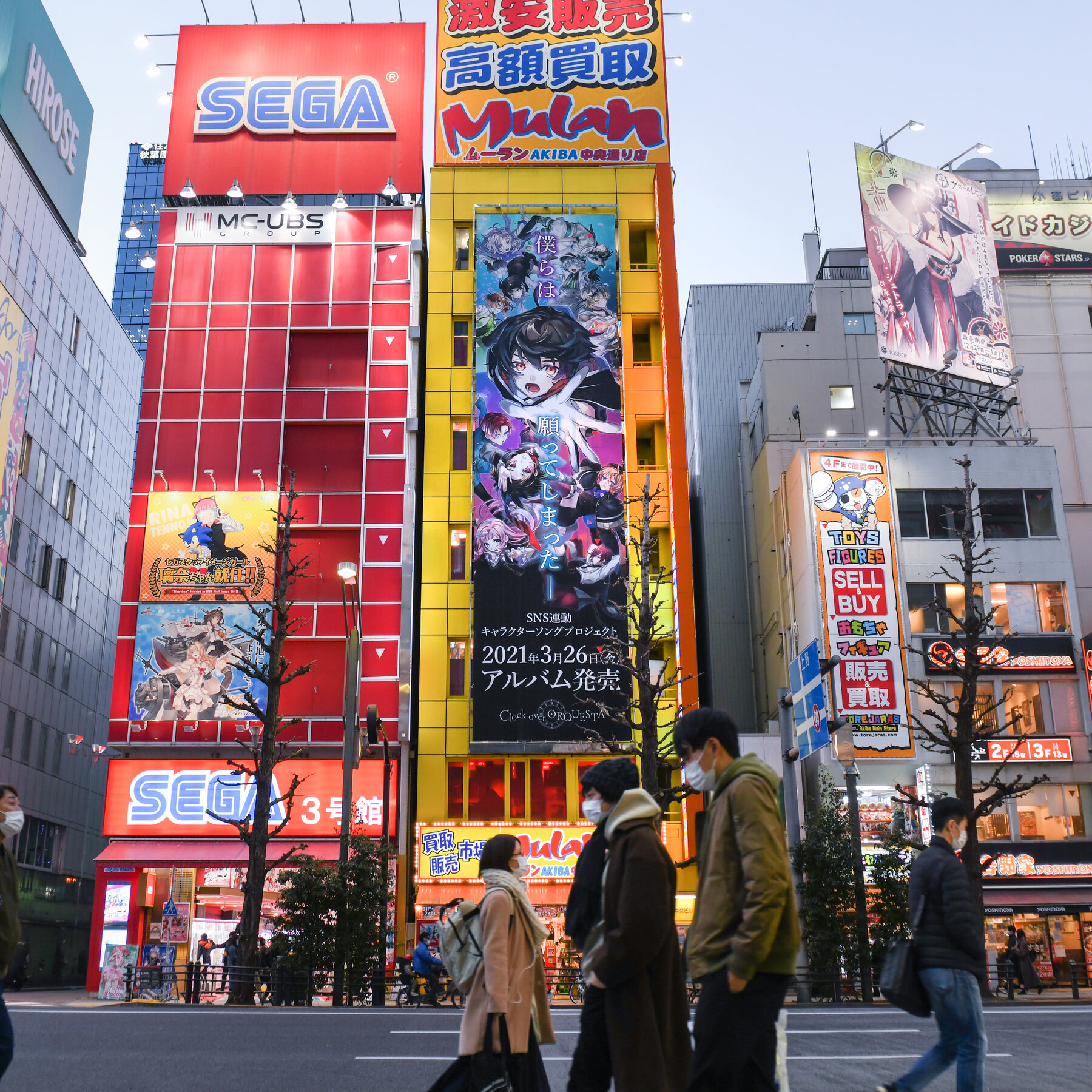Understanding The Anime Industry Economics
The anime industry stands as a vibrant and dynamic sector within the entertainment world, captivating audiences worldwide with its unique storytelling and artistic expression. Behind the scenes, however, the anime industry is governed by intricate economic dynamics that shape its production, distribution, and overall success. In this article, we delve into the multifaceted world of anime industry economics.
Jan 24, 20245 Shares72 Views

The anime industry stands as a vibrant and dynamic sector within the entertainment world, captivating audiences worldwide with its unique storytelling and artistic expression. Behind the scenes, however, the anime industry is governed by intricate economic dynamics that shape its production, distribution, and overall success. In this article, we delve into the multifaceted world of anime industry economics.
The Production Pipeline - Behind The Scenes Of Anime Creation
Creation Costs And Budgeting
Anime production is a meticulous journey that unfolds through several essential stages, each contributing to the creation of captivating storytelling and breathtaking visuals. The process initiates with conceptualization and scriptwriting, paving the way for subsequent phases like animation, voice acting, and soundtrack creation. If you're interested in staying updated on finance-related news, you can check out Murica Today.
Conceptualization and Scriptwriting
The journey commences with the conceptualization of the storyline, characters, and overall theme of the anime.
Scriptwriting follows, where writers craft the narrative, dialogue, and scenes that will later come to life through animation.
Animation
Animation breathes life into the anime, translating static drawings into dynamic motion.
The complexity of animation varies, impacting production costs. Highly detailed and intricate scenes contribute to higher expenses.
Voice Acting
Voice actors lend their talents to give characters distinct voices and personalities.
The involvement of renowned voice actors can significantly influence creation costs, as their popularity often comes with higher fees.
Soundtrack Creation:
Music and sound effects enhance the emotional impact of scenes.
Composing, recording, and integrating a captivating soundtrack add to the overall budget.
Budgeting as the Cornerstone
Budgeting is a crucial aspect that shapes the trajectory of an anime series.
Determining the allocation of resources influences the quality of animation, voice talent, and overall production scale.
Studios carefully weigh budget considerations to ensure a balance between creative excellence and financial viability.
Outsourcing And Global Collaboration
To navigate the intricacies of anime production, studios often employ strategies to manage costs and enhance the global appeal of their creations. Outsourcing and global collaboration are key components of this dynamic approach.
Outsourcing Production Elements
Many anime studios opt to outsource specific production elements to streamline costs.
Tasks such as animating frames or in-between frames may be assigned to studios in other countries with expertise in these areas.
Global Collaboration Benefits
Cost Reduction: Outsourcing allows studios to benefit from lower production costs in certain regions, contributing to overall budget management.
International Appeal: Collaborating with talent and studios worldwide enhances the international appeal of anime, broadening its reach and audience.
Challenges and Considerations
Despite the advantages, navigating cultural differences and ensuring a cohesive creative vision can pose challenges.
Maintaining quality standards across diverse production teams requires effective communication and coordination.
Digital Collaboration Platforms
Advancements in technology facilitate seamless global collaboration through digital platforms, enabling efficient communication and file sharing.
Revenue Streams - The Financial Tapestry Of Anime Studios
Broadcasting And Streaming
One of the lifelines of anime studiorevenue lies in the distribution of their creations through broadcasting on television networks and streaming platforms. This intricate network of distribution channels contributes significantly to the financial success of anime studios.
Television Networks
Anime series find a home on various television networks, allowing studios to reach a broad audience.
Licensing agreements with these networks provide a steady stream of revenue, with popular and long-running series commanding higher fees.
Streaming Platforms
The digital era has witnessed a surge in anime consumption through streaming platforms.
Licensing deals with platforms like Crunchyroll, Funimation, and Netflix provide a direct avenue for revenue, tapping into the growing trend of online streaming.
Simulcasting
The strategy of simulcasting, where anime episodes are broadcast simultaneously with their release in Japan, has become a lucrative practice.
This not only caters to the global audience but also generates revenue through subscription models and advertising.
DVD And Blu-ray Sales
In an era dominated by digital content, physical media, specifically DVD and Blu-ray sales, remains a stronghold for generating revenue within the anime industry.
Collector's Appeal
Anime enthusiasts often treasure physical collections, contributing to the enduring popularity of DVD and Blu-ray sales.
Limited-edition releases with exclusive bonus content attract collectors and fans who seek a tangible connection to their favorite series.
Direct-to-Consumer Sales
Studios often sell DVDs and Blu-rays directly to consumers through their official websites or at events.
This direct-to-consumer approach allows studios to retain a larger share of the revenue without relying on third-party retailers.
Merchandising And Branding
The vibrant world of anime merchandise serves as a powerhouse for revenue generation, driven by the enthusiasm of fans eager to embrace their favorite series in tangible forms.
Figurines, Clothing, and Accessories
Merchandise ranges from intricately designed figurines to clothing and accessories adorned with iconic characters and symbols.
Successful branding and the creation of characters with significant cultural impact contribute to a surge in merchandise sales.
Collaboration Ventures
Collaborations with fashion brands, toy companies, and lifestyle products further expand the reach of anime merchandise.
Limited edition collaborations often create a sense of exclusivity, driving demand among fans.
International Markets
The global appeal of anime transcends geographical boundaries, opening up lucrative revenue streams in international markets through strategic licensing and digital distribution.
Licensing for Distribution
Anime studios license their content for distribution outside Japan, allowing international audiences to access a diverse range of titles.
Licensing fees and royalties contribute substantially to the studios' revenue.
Dubbing and Subtitling
Adapting anime for international audiences involves dubbing or subtitling for different languages.
This localization effort enhances accessibility and viewer engagement, contributing to increased revenue.
Streaming Platforms and Global Reach
Streaming platforms with a global reach showcase anime to audiences worldwide, creating new revenue opportunities for studios.
The availability of diverse titles on international platforms enhances the industry's global footprint.
A Potential Economic Tiger Of The 21st Century?
The captivating journey of anime, evolving from classics like Speed Racer to global phenomena such as Pokemon and critically acclaimed films like "Spirited Away," highlights its adaptability and enduring appeal. As the anime industry continues to thrive, a compelling question emerges: Can anime emerge as a new economic tiger, reshaping Japan's economic trajectory in the 21st century?
The Evolutionary Arc Of Anime
Anime's evolution spans decades, with classics like Speed Racer laying the foundation for the global phenomenon it has become. The international success of iconic series like Pokemon and award-winning films like "Spirited Away" underscores the global reach and cultural impact of anime. Anime has proven its adaptability, transitioning from traditional hand-drawn animation to cutting-edge digital techniques. The enduring appeal lies in its ability to resonate with diverse audiences, transcending cultural boundaries.
Reshaping Japan's Economic Trajectory
The question of anime reshaping Japan's economic trajectory revolves around its potential to diversify the country's sources of revenue. While historically driven by industries like cars and electronics, anime offers a unique opportunity for economic diversification.
Diversification Of Revenue Streams
The economic impact of anime extends far beyond the direct production of animated series and films. Diversification into merchandise, licensing agreements, and collaborations showcases the industry's ability to generate revenue through various channels. Merchandising, including figurines, clothing, and accessories, emerges as a significant revenue stream.
Licensing agreements for anime-related products, games, and collaborations contribute to the industry's economic influence. Collaborations with other industries, such as fashion or technology, further expand the reach and economic potential of anime. Strategic partnerships create new avenues for revenue while increasing the visibility of anime in different markets.
Sustained Economic Contributions
The diversification of revenue streams indicates the potential for sustained economic contributions from the anime industry. This longevity is essential for anime to play a transformative role in Japan's economic landscape. Anime's global market presence ensures a broad reach, attracting audiences worldwide and contributing to international trade and tourism. The industry's ability to adapt to evolving consumer preferences and technological advancements enhances its global economic impact.
Navigating Negative Perceptions
Addressing criticisms surrounding the content of anime is a pivotal undertaking to secure its positive influence on society. Recognizing the concerns raised by critics, the anime industry must take proactive measures to address these issues head-on. Initiatives geared towards ensuring responsible storytelling and incorporating diverse themes into anime narratives become imperative in reshaping the public perception of this vibrant form of entertainment.
By acknowledging the critiques related to oversimplification and occasional vulgarity in certain anime content, the industry can demonstrate its commitment to societal responsibility. Embracing a diverse range of themes not only broadens the appeal of anime but also helps dispel concerns about content appropriateness. By championing inclusivity and sensitivity in storytelling, the anime industry can foster a more favorable public perception, ensuring that anime continues to be a source of positive influence for diverse audiences.
Global Collaboration And Market Expansion
Collaborating with international markets and strategically adapting content for diverse audiences presents a substantial opportunity to amplify the economic influence of anime. The global appeal of anime has opened doors to new horizons, and capitalizing on this momentum is crucial for sustained growth.
Engaging in global collaborations allows the anime industry to transcend cultural boundaries, creating content that resonates with audiences worldwide. Adapting anime to diverse cultural contexts demonstrates a commitment to inclusivity, expanding the reach of anime to previously untapped markets.
Anime Industry Economics - FAQs
What Is The Economic Impact Of Anime?
The economic impact of anime is substantial and multifaceted. The anime industry contributes significantly to Japan's economy through various revenue streams, including production, merchandise sales, licensing agreements, and collaborations.
The global popularity of anime has transformed it into a lucrative cultural export, contributing to Japan's soft power on the global stage.
How Profitable Is The Anime Industry?
In terms of profitability, the anime industry is known to generate considerable revenue. Beyond the direct production of animated series and films, the industry diversifies its income through merchandising, licensing agreements for products and games, collaborations with other industries, and strategic partnerships. This diversification contributes to the industry's profitability, allowing it to navigate economic challenges and sustain growth.
How Much Does The Anime Industry Contribute To Japan's Economy?
The anime industry plays a noteworthy role in contributing to Japan's economy. While historically driven by industries like cars and electronics, anime has emerged as a unique economic force, offering diversification in revenue sources.
The industry's impact extends beyond domestic borders, with international licensing, streaming, and merchandise sales contributing to Japan's overall economic prosperity. While it may not be the sole driver of Japan's economy, the anime industry's contributions are significant and contribute to the country's global cultural influence and economic standing.
Conclusion
The Anime Industry Economics is a multifaceted landscape where creativity intersects with financial considerations. Balancing production costs, exploring diverse revenue streams, and navigating the challenges of the digital age are all part of the industry's journey. As anime continues to captivate global audiences, understanding its economic dynamics becomes increasingly crucial for fans and industry enthusiasts alike.
Latest Articles
Popular Articles



